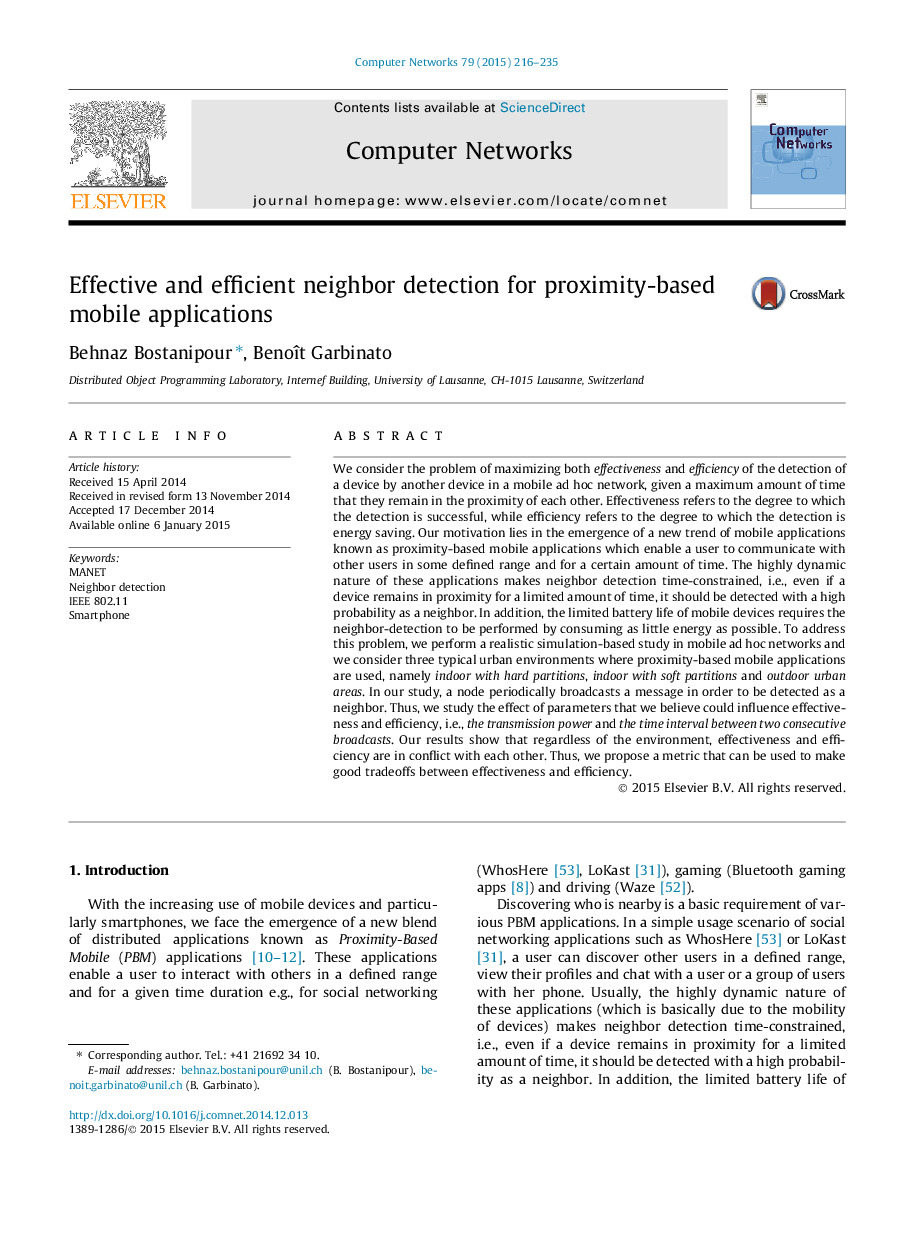| Article ID | Journal | Published Year | Pages | File Type |
|---|---|---|---|---|
| 450753 | Computer Networks | 2015 | 20 Pages |
We consider the problem of maximizing both effectiveness and efficiency of the detection of a device by another device in a mobile ad hoc network, given a maximum amount of time that they remain in the proximity of each other. Effectiveness refers to the degree to which the detection is successful, while efficiency refers to the degree to which the detection is energy saving. Our motivation lies in the emergence of a new trend of mobile applications known as proximity-based mobile applications which enable a user to communicate with other users in some defined range and for a certain amount of time. The highly dynamic nature of these applications makes neighbor detection time-constrained, i.e., even if a device remains in proximity for a limited amount of time, it should be detected with a high probability as a neighbor. In addition, the limited battery life of mobile devices requires the neighbor-detection to be performed by consuming as little energy as possible. To address this problem, we perform a realistic simulation-based study in mobile ad hoc networks and we consider three typical urban environments where proximity-based mobile applications are used, namely indoor with hard partitions, indoor with soft partitions and outdoor urban areas. In our study, a node periodically broadcasts a message in order to be detected as a neighbor. Thus, we study the effect of parameters that we believe could influence effectiveness and efficiency, i.e., the transmission power and the time interval between two consecutive broadcasts. Our results show that regardless of the environment, effectiveness and efficiency are in conflict with each other. Thus, we propose a metric that can be used to make good tradeoffs between effectiveness and efficiency.
